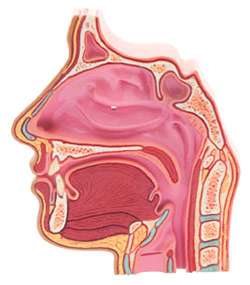Pheromones a myth in mammals

Something just didn’t smell right to Richard Doty. It was 1976 when the director of the Smell and Taste Center at Penn’s School of Medicine first started raising a stink about the existence of pheromones.
When his latest book, “The Great Pheromone Myth,” was released earlier this year, it reignited the debate over the science of these supposed smells.
Even the definition of the word is controversial. Generally defined as a biological chemical that induces a well-defined response in the same animal, the concept of pheromones in mammals has been around since the late 1950s.
The term has lingered in both scientific circles and pop culture since then. We’ve all heard tales of how pheromones cause sparks to fly between people who almost subconsciously follow their noses even before their hearts toward a potential sweetheart.
There’s only one problem: According to Doty, mammals (in contrast to insects), do not have pheromones.
“The pheromone term seems to have mainly attracted perfume manufacturers and people looking for the fountain of youth,” Doty says. “It’s just not the way things are. It would be like saying a particular color is why we choose a mate. That’s just not how relationships are formed.”
The fallacy of the pheromone is not a position Doty has carved out only recently. He has spent decades researching the chemical senses (smell and taste) from both basic and clinical perspectives.
“We looked at the literature relative to the set of criteria that would distinguish a pheromone from a chemical,” says Doty, a professor in the School of Medicine’s Department of Otorhinolaryngology. “In reality, almost everything you could show [illustrates] that almost all the situations of changed behavior were learned. Animals are very good at learning the meaning of chemicals.”
Doty objects to the idea that a single chemical emitted by one mammal can induce a behavioral change in another of the same species, and therefore little or no more scientific study about the cause and effect of the relationship is needed.
“It’s an oversimplification of how chemicals work in the environment and how animals are affected by them,” he says. “People have oversimplified the nature of the olfactory system. It’s the brain that interprets what meaning is. Conditioning plays a very significant role in all aspects of human and mammal behavior.”
Though it deals with a testy topic, Doty’s book generally has been received well.
“‘The Great Pheromone Myth’ is a lovely mural of important developmental questions and phenomena,” reads a recent review in Developmental Psychobiology. “The book is also an excellent guide to a field of inquiry, a conceptual framework and an admirable product of scholarship. It offers much to professionals and advanced students in a wide range of sensory, behavioral, ecological, physiological and even clinical fields.”
Those who’ve criticized Doty’s book range from the militantly pro-pheromone, many of whom Doty says have stated they will not read it, to those who say the whole argument is a tussle over semantics.
“It’s erroneous to infer that all these mammalian behaviors are determined in an invariant way by a single response to a single chemical,” Doty says. “It’s not just semantics, it’s the whole conceptualization.”
Doty has spent countless hours throughout his career working to debunk myths surrounding pheromones. This book may be his crowning achievement, yet the concept seems to never dissipate.
“People want [pheromones] to exist,” he says. “It’s part of our need as humans to have belief in the unknown. We have the need to believe that certain things are happening beyond our senses.”
Provided by Pennsylvania State University













